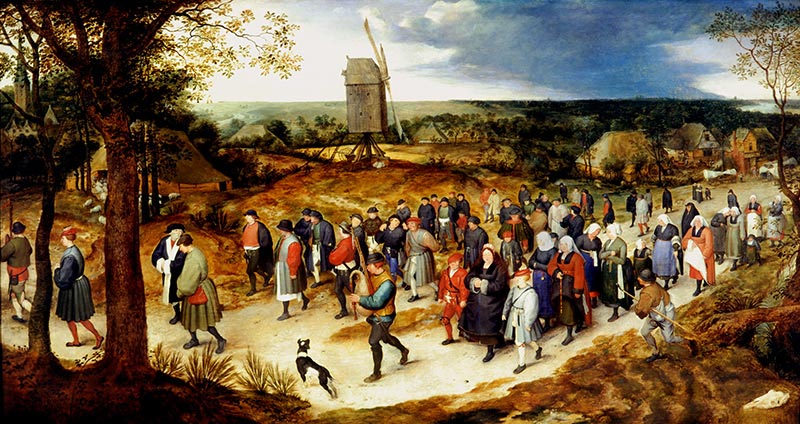
Painting attributed to Jan Brueghel
The wedding
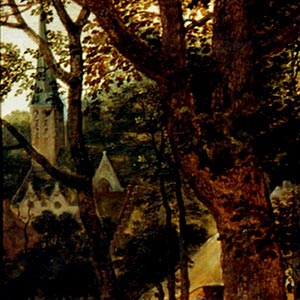 The painting shows the inhabitants of a Brabançon village accompanying a couple to church for their wedding. The church can be seen on the extreme left of the scene. The men and women walk in two separate groups.
The painting shows the inhabitants of a Brabançon village accompanying a couple to church for their wedding. The church can be seen on the extreme left of the scene. The men and women walk in two separate groups.
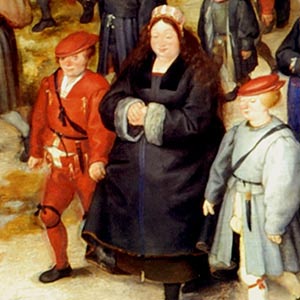 The future spouses wear a kind of small crown.
The future spouses wear a kind of small crown.
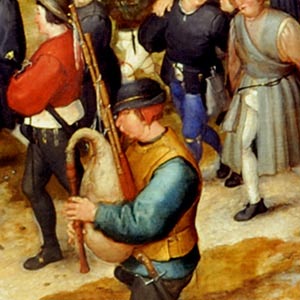 The procession is accompanied by two bagpipe players. The subject is reminiscent of other village wedding feasts painted by Peter Brueghel.
The procession is accompanied by two bagpipe players. The subject is reminiscent of other village wedding feasts painted by Peter Brueghel.
The village
 The background is dominated in the centre by a wooden windmill overlooking a small hill.
The background is dominated in the centre by a wooden windmill overlooking a small hill.
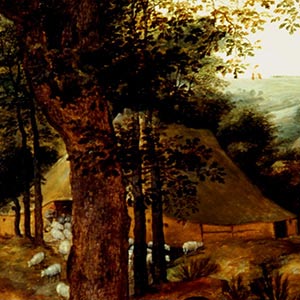 Between the trees, you can see the village farms and a sheepfold on the left. Contrary to the stone church, the half-timbered houses are built of cob and have thatched roofs.
Between the trees, you can see the village farms and a sheepfold on the left. Contrary to the stone church, the half-timbered houses are built of cob and have thatched roofs.
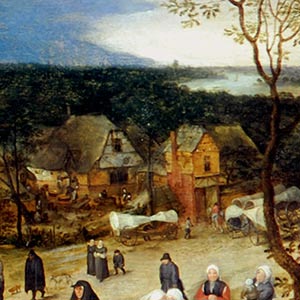 In front of a slightly taller building on the extreme right (an inn or tavern), a few empty carts can be seen. In the square to the back, the wedding feast has been prepared over wood fires in large pots.
In front of a slightly taller building on the extreme right (an inn or tavern), a few empty carts can be seen. In the square to the back, the wedding feast has been prepared over wood fires in large pots.
The countryside setting has much in common with the hills of Pajottenland, a region to the north-west of Brussels.
Jan Brueghel the ‘Elder’ or ‘Velvet Brueghel’ (1568-1625)
Jan was the second son of Peter Brueghel. Born in Brussels, he was barely one year old when his father passed away. Known mostly for landscapes and still lifes, he particularly excelled at floral compositions. He also completed several copies of works by his father.
Next step
Turn back to discover the large two-piece altarpiece presented in this room, one part sculpted and the other painted.




